
58 Applying design thinking in public policy formulation and implications…
APPLYING DESIGN THINKING IN PUBLIC POLICY
FORMULATION AND IMPLICATIONS FOR VIETNAM
Nguyen Ha Thi Quynh Trang
1
, Pham Thi Tham
National Institute for Science and Technology Policy and Strategy Studies
Pham Thi Linh
International and Graduate School,
Vietnam Institute of Science Technology and Innovation
Summary:
Design Thinking first emerged as a concept around the 1950s - 1960s of the 20th century.
However, the role and contributions of design thinking have been recognized not only in the field
of design but also in the progress of science, business management, and education... In the field
of public policy, design thinking is considered an approach that can be employed to tackle
complex issues, offering tools for managers to explore creative opportunities, streamline
organizations, and manage resources more effectively. In the policy-making stages, design
thinking is regarded as an approach to better understanding and structuring the policy issues. It
is characterized by a creative process involving multiple stakeholders, especially policy
beneficiaries. Besides systematizing the basic concept of design thinking, this paper will
summarize the potential of applying design thinking in the public policy cycle and discuss its
debates and limitations, thereby offering suggestions for Vietnam.
Keywords: Design thinking; Public policy formulation.
Code: 24102801
1. Introduction
DT is a relatively new concept that first emerged in the 50s - 60s of the 20th
century. Its role and contributions have been recognized not only in the field
of design but also in the advances of science, education and business
administration (Do Duc Lan et al., 2021),... DT is considered one of the
solutions that can be used to solve complex problems. DT provides tools that
help managers explore creative opportunities, streamline organizations, and
control resources. In the public policy cycle, DT is viewed as a way to better
understand and structure the policy issue. It is characterized by a creative
process and the participation of many stakeholders, especially policy
beneficiaries. So, systematizing the basic concepts of DT and analyzing its
potential applications in the public policy cycle will provide basic arguments
for making the suggestions for its implementation in Vietnam.
1
Author’s contact: quynhtrangrudn2018@gmail.com

JSTPM Vol 13, No 3+4, 2024 59
2. Basic concepts
According to Vietnamese documents currently circulating in Vietnam that the
authors have accessed, Design Thinking (DT) is translated as “ Tư duy thiết
kế”. In simple understanding, design thinking - “Tư duy thiết kế” - is an
approach, a thinking framework that users can apply in many different fields.
When it first appeared in the mid-20th century, after World War II, DT was
used mainly to focus on the architecture and engineering context, which were
considered to be the fields with great changes during this period. In the period
after that, there was a trend, among the design community, to search for new
design ways and methods to improve work efficiency. After a while, the
search solutions did not show clear effectiveness, so designers shifted from
searching for methods to searching the “ways of thinking” to create products.
At that time, the term “design thinking” was still not popular but was
understood only as how designers think creatively.
In 1969, in Herbert Simon’s Nobel Prize-winning publication “The Science
of the Artificial”, the design was introduced as a problem-solving method,
outlining the initial linear model of analysis-synthesis-evaluation (cited in Yin
et al., 2013). In 1987, Rowe mentioned the term “design thinking” in his
publication “Design Thinking”, providing a systematic description of the
design process in architecture and planning. Nearly 20 years later, in 2005,
Stanford University established a d.school to promote interdisciplinary design
thinking education. By 2005-2012, the term “design thinking” had been
expanded and defined more clearly. Two researchers who contributed greatly
to shaping the concept of design thinking were Brown (2009) and Martin
(2009). When it comes to DT, people often think of a cyclical, iterative
process for innovation, non-linearity, and continuous improvement in which
the “designer” seeks to understand the “user” (customer or citizen), redefines
problems to create creative solutions for prototyping and testing, and searches
for strategies and alternatives
2
(according to the Interaction Design
Foundation).
In this article, design thinking is often understood as a series of research,
assumption testing, and problems redefining to find solutions or to build
better strategies. Design thinking can be considered a method that helps find
new, breakthrough solutions to solve a specific problem in an optimal way.
This can be a cyclical process that can be repeated to innovate and
continuously improve (Nguyen Ha Thi Quynh Trang et al., 2024).
According to design thinking, the implementation process consists of 5 steps
(according to Uebernickel and Brenner, 2020; Do Duc Lan et al., 2021),
2
Source:https://www.interaction-design.org/literature/topics/design-
thinking#:~:text=Design%20thinking%20is%20a%20non,solutions%20to%20prototype%20and%20test.

60 Applying design thinking in public policy formulation and implications…
which are: Empathizing; Problem defining; Ideating; Prototyping; and
Testing (Figure 1).
Source: Authors, 2024
Figure 1. Design thinking implementation process
The birth of DT is considered one of the approaches to increase the ability to
solve wicked problems that conventional solutions have difficulty or cannot
solve (Rittel, 1973). Wicked problems are considered the focus of design
thinking because of their complexity, and multidimensionality, require an
integrated approach to deeply understand human needs, motivations, and
behaviors. Up to now, design thinking has been considered one of the tools
used to solve problems in many fields (Buchanan, 1992).
2.1. Policy and public policy
According to Harvard Law School
3
: “Policy is a course of action to solve a
political problem. Policy making itself is a process, formed by public or private
groups who formulate strategies related to a political problem, and carried out
by government officials who implement policies as specific programs and
actions. Therefore, policy-making does not only refer to the final results of
policies but generally also analyzes government decisions and how different
groups try to make government policymakers act in a particular way”.
According to B. Guy Peter (2006), “Public policy is the totality of state
activities that directly or indirectly affect the lives of all citizens”. Thomas R.
Dye (2016) said, “Public policy is what a government chooses to do or not to
3
Source: https://hls.harvard.edu/bernard-koteen-office-of-public-interest-advising/about-opia/what-is-public-
interest-law/public-interest-work-types/policy/

JSTPM Vol 13, No 3+4, 2024 61
do”. According to William N. Dunn (2017), “Public policy is a complex
combination of interrelated choices, including decisions not to act, made by
state agencies or state officials”. Public policy is also defined in the document
on “Administrative Terminology” (National Academy of Public
Administration) as “the regulations on the state's response to issues arising
in community life, and that are expressed in many different forms, to promote
social development in a certain direction” or “a series of decisions and
actions of the State to solve a common problem arising in socio-economic life
according to a defined goal”.
In Vietnam, public policy is one of the basic tools used by the State to perform
the state management function
4
. In this study, public policy can be understood
as the basic tool and method for the state to orient development and pursue
the common interests of society. Public policy is proposed by the state and
has a large scope of impact on political, economic, and social life at the
national level, a locality, an industry, a group of people, or a social
community.
2.2. Public policy making process
The policy-making process, also known as the policy cycle, describes the
logic of the formation and development of public policy, along with the roles
and relationships of the subjects participating in this process (Kraft, Fulong,
2015).
According to many authors (Nguyen Anh Phuong, 2020; Mintrom and
Luetjens, 2016), the policy cycle includes three main stages: policy making,
policy implementation, and policy analysis and evaluation. In chronological
order, the steps can be divided as follows:
(1) Identifying and defining the problems arising in social life (Defining
policy problems);
(2) Setting an agenda;
(3) Finding and proposing solutions - policy options;
(4) Policy formation;
(5) Policy adoption;
(6) Policy implementation;
(7) Policy analysis, evaluation, adjustment, and supplementation.
4
Article 26, 1992 Constitution, amended in 2001: “The State unifies the management of the national economy
through laws, plans, policies…”.

62 Applying design thinking in public policy formulation and implications…
Although divided chronologically, in reality, some scholars can group the
steps, even the first 4 stages of the above-mentioned public policy cycle, to
describe the creation of a complete (draft) policy, with many concepts used
(with similar meanings), namely: Policy formulation/ Policy design/ Policy
construction/ Policy planning/ Policy making...) (according to Nguyen Anh
Phuong, 2020).
Policy formulation - in this study, this stage is called “Public policy
formulation”. Public policy formulation is the entire process from setting the
agenda to formulating and promulgating policies to solve a public problem
5
(from step 1 to the end of step 5). In this article, the authors only focus on the
application of DT in the stage of public policy formation or public policy
formulation. This is the initial step in the policy cycle and is also a particularly
important step.
3. Potentials of applying design thinking to public policy-making
In design thinking research, there are some common keywords, often
mentioned as “user/beneficiary-centered”, “prototype”, and “stakeholder
interaction”... In particular, design thinking focuses on users (products,
services)/beneficiaries (policies), starting from the points of view of
users/beneficiaries, and continuously assessing their needs, expectations, and
behaviors. Through capturing and understanding the needs and actual
experiences of users/beneficiaries, DT aims to provide more suitable products
and services, to improve their satisfaction. Therefore, innovation is both a
prominent feature, the center point, and the goal of DT, encouraging designers
to break away from traditional thinking methods, looking towards and
practicing creative, different, and intuitive approaches. Basically, DT is an
open and non-linear model.
Because of the above characteristics, although DT initially appeared in the
private sector (IDEO, Stanford School of Design, etc) but is now widely
applied in the public sector, it is believed that: Strengthening connectivity and
diffusion, helps to solve more effectively the socio-economic problems with
increasing complexity (climate change, inequality,...), connecting
stakeholders, managing interests and citizens, in which a topic of interest is
that design becomes a strategy associated with innovation (Brown, 2009).
According to the tradition of theoretical research and teaching of public
policy, design has long been considered a component of policy development
5
Source:
https://hocvientuphap.edu.vn/boiduong/Lists/ThongBaoNhapHoc/Attachments/203/Tai%20lieu%20BD%20ngach
%20CVC%20ban %20hanh%20theo%20Q%C4%90%20so%202720-%2028.12.2018%20cua%20BNV.pdf




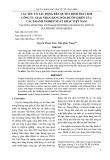
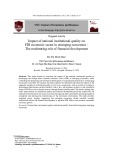
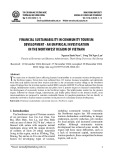
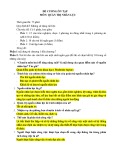
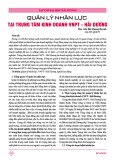



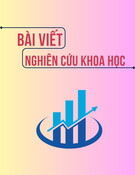
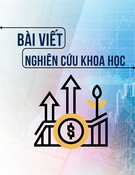




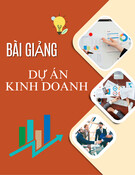
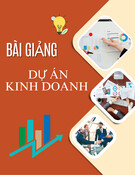
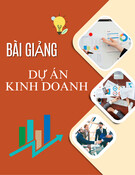
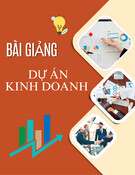

![Bộ câu hỏi trắc nghiệm Đổi mới và sáng tạo [mới nhất]](https://cdn.tailieu.vn/images/document/thumbnail/2025/20251007/kimphuong1001/135x160/56111759828894.jpg)


